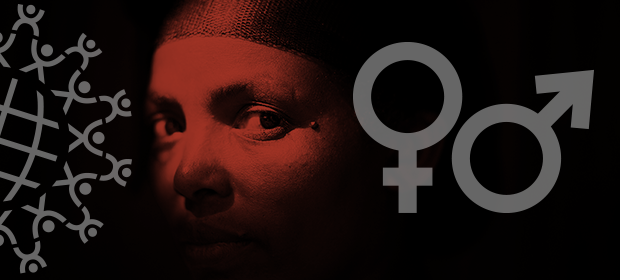Where We Work
See our interactive map


Those of us who look for ways to empower women and girls in international health development this year warmly welcomed the US Global Strategy to Empower Adolescent Girls. Its goal is to ensure girls are educated, healthy, economically and socially empowered, and free from violence and discrimination, thereby promoting global development, security, and prosperity.
However, the strategy misses something important. It overlooks child labor—a human rights violation that must be addressed if we’re to reach the strategy’s stated goals.
The strategy focuses on girls’ access to high-quality education; reducing their vulnerability to gender-based violence, including harmful norms and practices such as female genital mutilation/cutting and child, early, and forced marriage; and increasing their social and economic capital so that they may fully participate in their societies, claim their rights, and control their own lives, recognizing that these same protections have been necessary for boys to advance as well. The strategy aims to provide economic opportunities and incentives for girls and their families; empower girls with information, skills, and services; support, mobilize, and educate communities to change harmful norms and practices; and strengthen policy and legal frameworks and accountability.But there’s no mention of ending girl child labor. Why is this important?
Child labor includes children working on family farms or in family businesses, in domestic labor in others' households and sweatshop labor, and children engaged in armed conflict, prostitution, or other illicit activities.
The rights of children are violated when they perform any labor that interferes with their education; is harmful to their mental, spiritual, or social development; or puts them at risk of sexual and economic exploitation and violence, abduction, or arbitrary deprivation of liberty.
Domestic work performed in the privacy of households is a subset of children in employment that needs our urgent attention. An estimated 17.2 million children aged 5-17 were engaged in domestic work somewhere in the world in 2012. Girls (11.5 million) far outnumbered boys (5.6 million) in such work. Of the total number of children aged 5-17 engaged in domestic work, around 67% are girls and 33% are boys.
The gap widens as children get older. Women and girls also represent a larger proportion of persons in forced labor. Of the 20.9 million forced laborers at work today, more than half (55%) are women and girls.
The International Labor Organization squarely recognizes child domestic labor as an issue of gender inequality, writing “Evidence shows that the practice is highly feminized, in large part due to deep-rooted societal beliefs that domestic work is fundamentally the domain of women and girls…” It’s not surprising that children in domestic labor have less access to education. The large majority of child domestic workers come from poor families with few social safety nets, where children are sent to work to lessen the financial strain at home. In addition to poverty, there are other “push” factors, such as gender and ethnic discrimination, social exclusion, lack of educational opportunities, domestic violence, (fleeing a) forced marriage, rural-to-urban migration, displacement, or the loss of close family members as a result of conflict and disease. These push factors may be compounded by the cultural motivations of parents to send their girls into “safe” and suitable situations in advance of married life. “Given the connections between child labor and schooling,” a World Bank report states, “the efforts of the Education for All partnership will not be fully successful without addressing child labor.”
It is therefore imperative that domestic and other child labor be acknowledged alongside child, early, and forced marriage in the US Global Strategy to Empower Adolescent Girls as a key barrier to the education of girls. The Berhane Hewan program tested in Burkina Faso, Ethiopia, and Tanzania and the BALIKA project tested in Bangladesh have both identified and addressed the economic drivers of child, early, and forced marriage, and have found that providing economic incentives can delay child marriage and keep girls in school. Programs designed to reduce child, early, and forced marriage by addressing economic drivers and broadening girls’ options and social and economic capital may likewise be effective in addressing the drivers of girl child domestic labor and keeping girls in school—if the issue of child labor is addressed squarely.
Until it squarely takes on child labor...the Global Strategy to Empower Adolescent Girls will fight only part of the battle.
The rights of children are violated when they perform any labor that interferes with their education; is harmful to their mental, spiritual, or social development; or puts them at risk of sexual and economic exploitation and violence, abduction, or arbitrary deprivation of liberty. The conditions of child and domestic labor (as well as child, early, and forced marriage) can violate these rights.
Raising the profile of child and domestic labor must be a human rights and gender equality priority. Until it squarely takes on child labor and creates a “virtuous cycle,” the Global Strategy to Empower Adolescent Girls will fight only part of the battle.
Next week policy-makers, development experts, advocates for gender equality, and other decision-makers meet in New York at the 71st UN General Assembly. As high-level conversations and partnerships around achieving the Sustainable Development Goals take place, child labor should not again be overlooked.Together we must work to:
Get the latest updates from the blog and eNews




